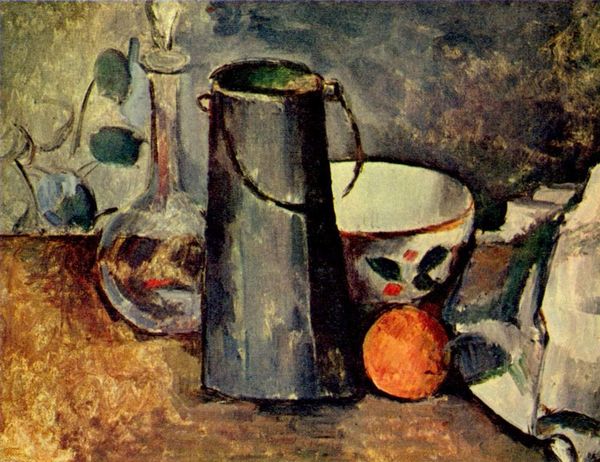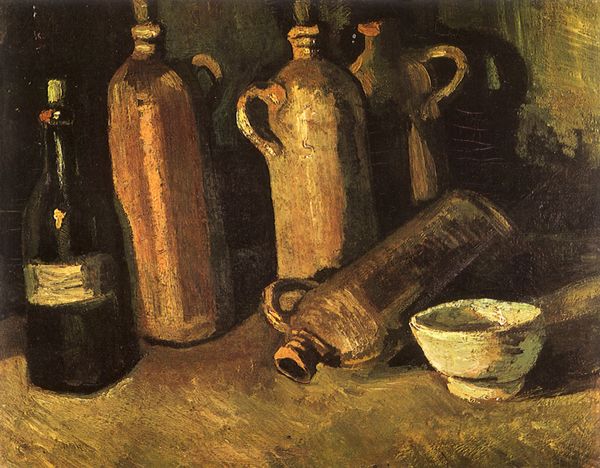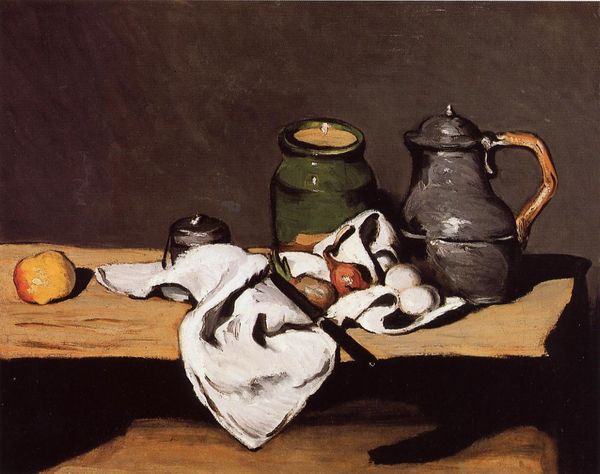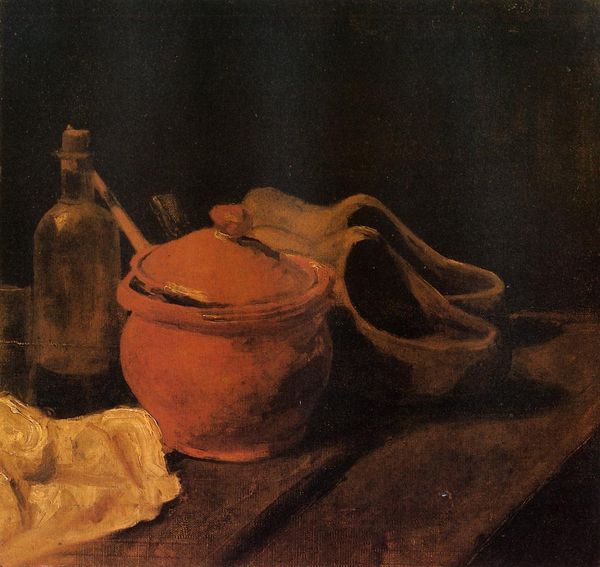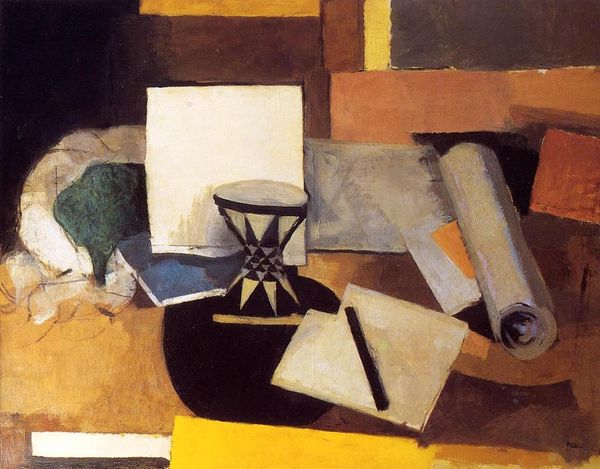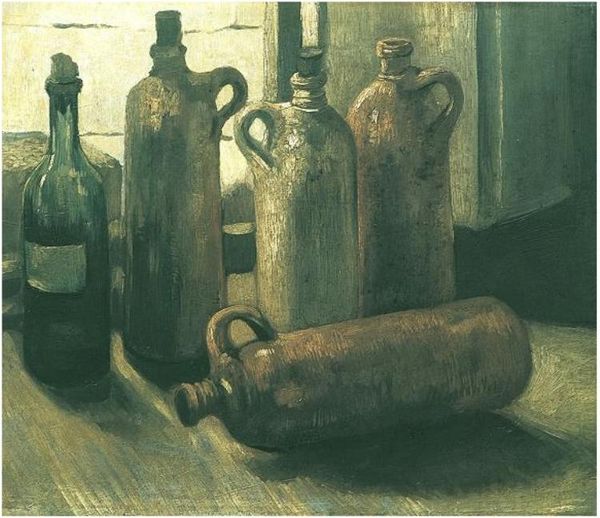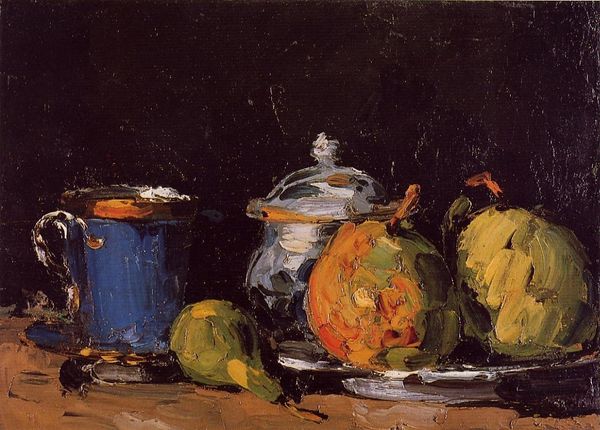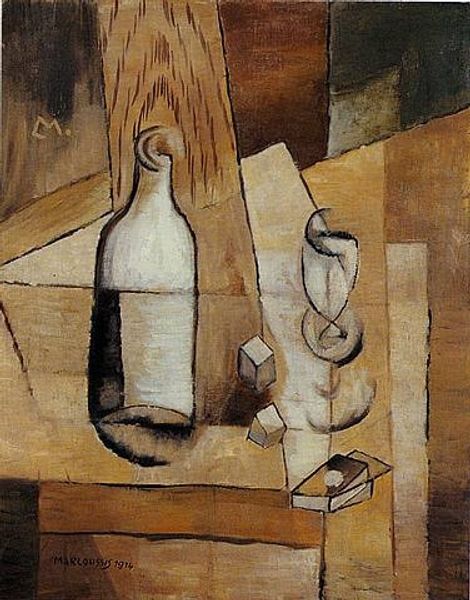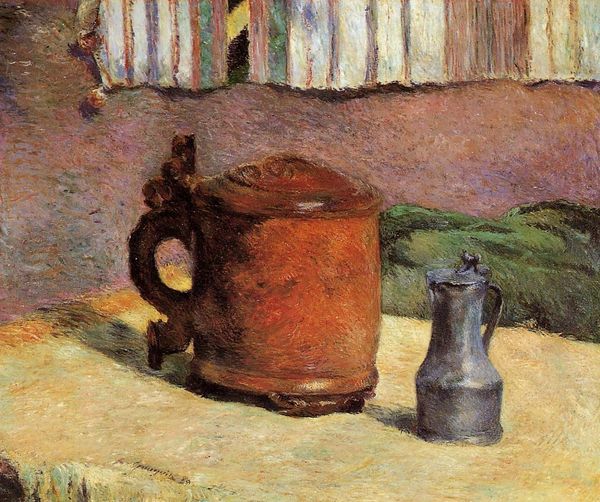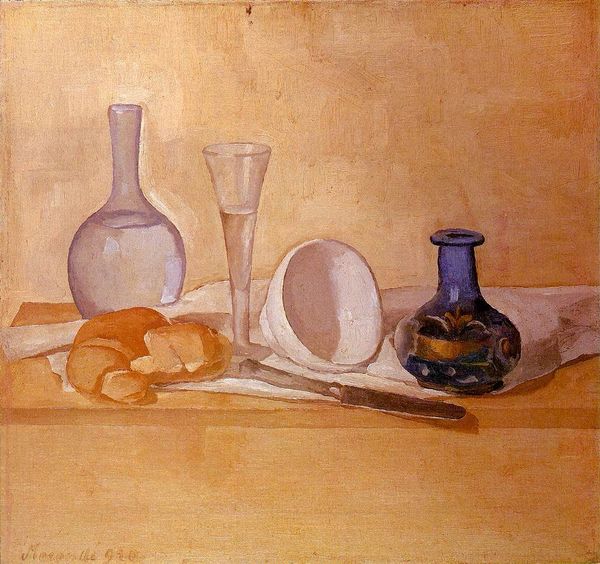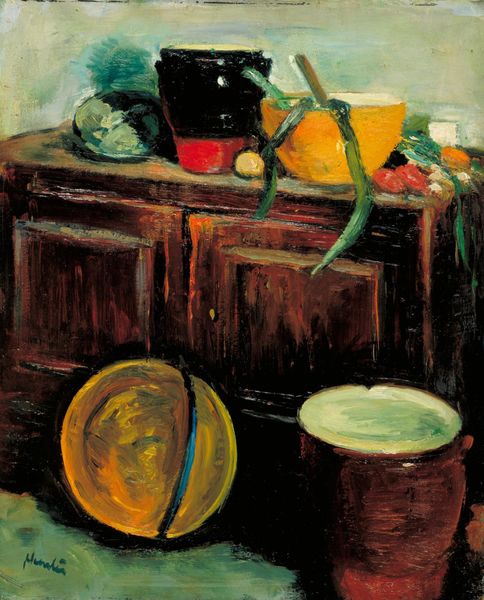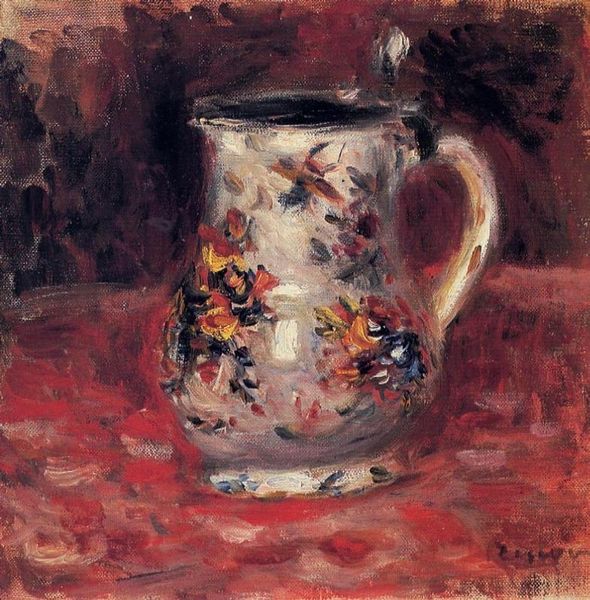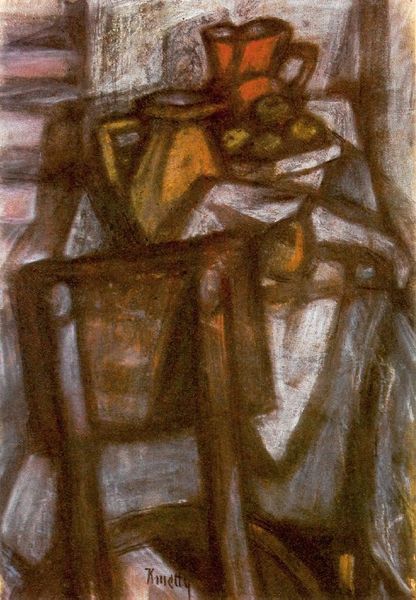
tempera, oil-paint
#
still-life
#
still-life-photography
#
tempera
#
oil-paint
#
oil painting
#
italian-renaissance
Copyright: Filippo De Pisis,Fair Use
Curator: Ah, this still life exudes a quiet, domestic sort of energy, doesn’t it? It's got this feeling of morning light filtering through a window, you know? I can almost smell the slightly metallic tang of the coffeepot. Editor: Indeed. The painting is called “Still Life," attributed to Filippo De Pisis, and executed in oil and tempera on, what appears to be, a modest-sized canvas. There's a deliberate arrangement of objects: fruit, metallic utensils, and pottery. Curator: De Pisis, eh? The arrangement feels both random and very, very considered, almost as if the artist stumbled upon this scene exactly as it was and just had to immortalize it on canvas. The colour is muted—but I sense so much beneath the surface. Editor: Precisely. De Pisis's deliberate compositional choices create several dynamic vectors that traverse the canvas. The strong verticals of the coffeepot offer an intriguing contrast with the oblique trajectory formed by the fallen beaker, stirring stick, and loosely draped cloth. This arrangement seems to me a studied interplay of lines and angles. Curator: Right, right… And all those lovely diagonals are contrasted by a somewhat subdued palette—oranges and umbers tempered by greens that have got me hypnotized. I want to feel the worn surface of the cloth, that rough glint of metal. The artist seems to find such exquisite joy in everydayness, doesn't it strike you? Editor: One could analyze the textures through the semiotic lens; the rendering invites the eye to linger. We see layers upon layers—glazes adding depth. De Pisis here manages to convey solidity of form, and the very essence of tactile qualities that resonate so viscerally for viewers today. Curator: You’ve really articulated this picture so wonderfully and shown us the structural components to consider. Now, I can see so much in the relationships between the different objects. I mean, there is beauty everywhere here! It almost inspires a sense of calm... Editor: That feeling comes as much from the arrangement of its elements as it does from De Pisis's treatment of light and dark, color, and texture—revealing the underlying mechanics that stir human emotion.
Comments
No comments
Be the first to comment and join the conversation on the ultimate creative platform.

